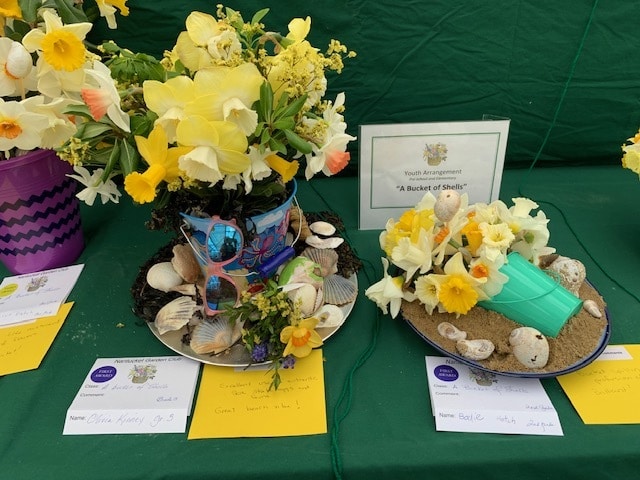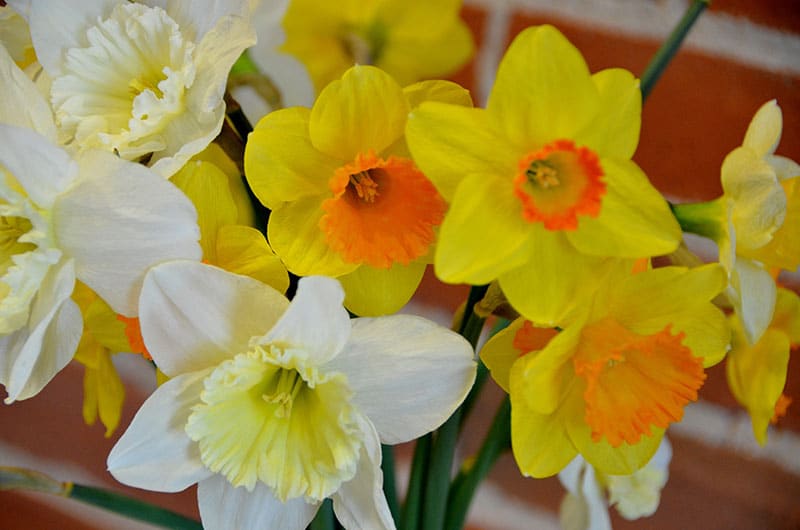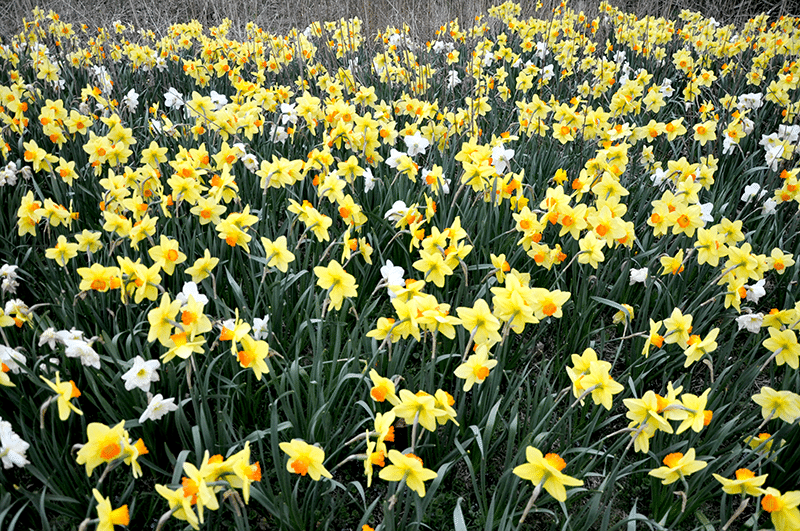After the gray, windy and cold days of winter, there is nothing more welcoming than a bunch of yellow daffodils to cheer one up. What is the best way to pick them, when to pick them, how to arrange them …questions either asked or wondered. Hopefully, the information presented below will help you to enjoy these first joys of spring.
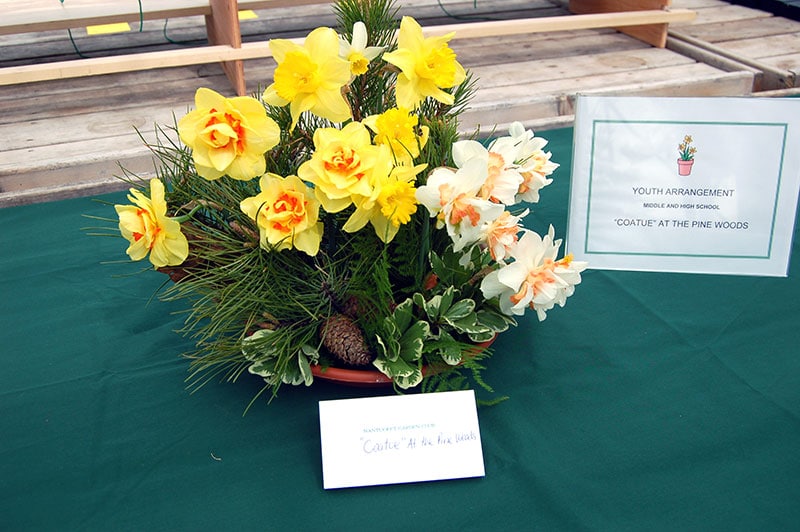
Picking Daffodils and what to do with them after you pick them: Daffodils are a wonder!!!! Out of the dark earth suddenly green shoots appear and as the days go on, the shoots grow into tall grass like stems. Seemingly, overnight their stems develop chubby little buds at their ends, pregnant with new life. Those buds begin to change color and before you know it, a lovely flower with a corona in the center surrounded with petals is to be seen dotted all over the landscape. Pick the stems early in the morning, before the sun has a chance to warm them. You may even pick a bud ready to pop which will give you a little more life span of the bloom.

Conditioning daffodils: Cut each stem at bottom with a sharp knife or scissors and immediately put into a container of lukewarm water. Keep the container in a cool place out of direct sunlight. Daffodils stems, when cut, leak out a kind of sap. Let them sit in the water for at least one-half hour to one hour. Rinse stems and replace with fresh cool water in the container. Again, place in a cool area, out of direct sun for 6-8 hours or overnight. Why do I do this? The sap is toxic to other plant materials. If you plan on combining different spring flowers with daffodils this step is absolutely necessary. However, if you just want to put a large bunch of only daffodils in a container, they will be very happy after you have conditioned them as mentioned above.
Containers for daffodils: Daffodils can be beautifully displayed in multitude of containers, from a simple basket to a crystal vase, or even a shallow bowl. Putting one or two stems in several bottles arranged in a kind of pattern creates a wonderful look or they are very attractive in a “natural setting”, surrounded with woody spring twigs or branches, using mosses to cover one’s mechanics. Daffodils are happiest with their stems directly in water. They are also thirsty, so the water level should be checked daily.
Mechanics – how you hold the flower in place: mechanics can be floral foam, pin holder or even twigs or branches swirled to create a kind of nest to hold your stems upright in your container. Because daffodil stems are soft, place the stems as you wish holding the stem about 2 inches from the bottom and gently pushing them into place. A little trick because the stems are so soft, you may take a pipe cleaner which you then insert into the “tube” of the stem pushing until you feel resistance, then cutting off the pipe cleaner even with the stem. If you are using foam, the stems need to be inserted about one inch. By using a pen to make a small hole in the foam first, you will protect the stem from breaking or bending. When using “nesting material” the daffodil stem goes directly in the water with the “nest” to hold it upright.
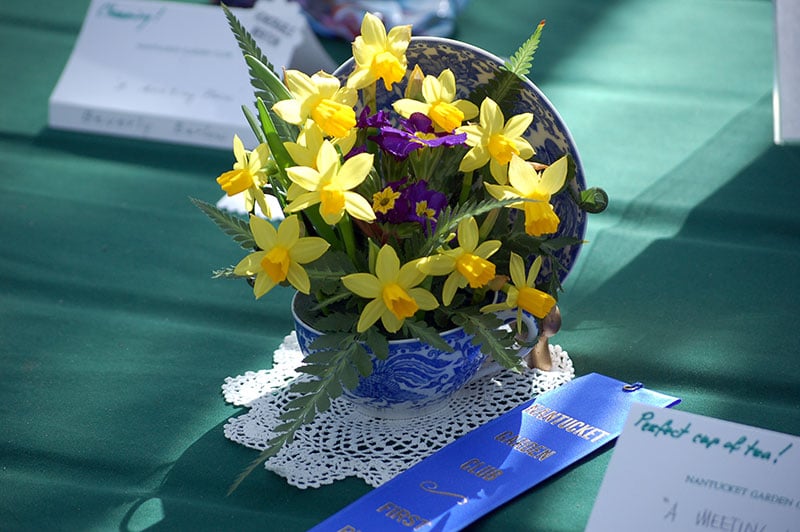
What flowers should I mix with daffodils: Daffodils are very attractive combined with other spring flowers such as tulips, roses, ranunculus, iris, hyacinth, viburnum, a mixture or variety of daffodils or narcissus, and / or in combination with flowering spring branches such as cherry or forsythia. You may also choose your favorite flowers or berries from the florist. It is important to use clean water mixed with a packet of bulb flower food (from S & S) as well as 3-4 drops of Clorox to keep the water free of decay.

And now for a personal message. Frankly, arranging with daffodils is not the easiest as the flowers are rather “stiff”. However, my favorite way to arrange “the queen of Spring”is to put very many stems together – 15 to 21, trying to keep the stems equally vertical and standing straight. If you can keep them together, a clear vase is wonderful. I prefer to put this same amount in either ceramic, silver, copper, brass, pewter, or antique china container, tall rectangular or round with a narrow neck. To soften the arrangement, place some contrasting greens, cut from your yard, as a kind of lacey edge to the lip of the container. If not that, pull some of the shorter daffodils over and down over the lip of the container to achieve the same look. A cut crystal vase is stunning as the cut of the crystal does camouflage the stems. But the arrangement SPARKLES!!! And now at the other end of the arranging spectrum, try using one perfect daffodil stem in unique container, creating an artistic still life. For fun, take 5 of 7 test tubes in a rack, and fill them with a variety of daffodil types from multi or single stems, small or large, tall or short. The most important thing however, NO STRESS, – Have FUN and ENJOY this wonderful yellow harbinger of Spring!!!
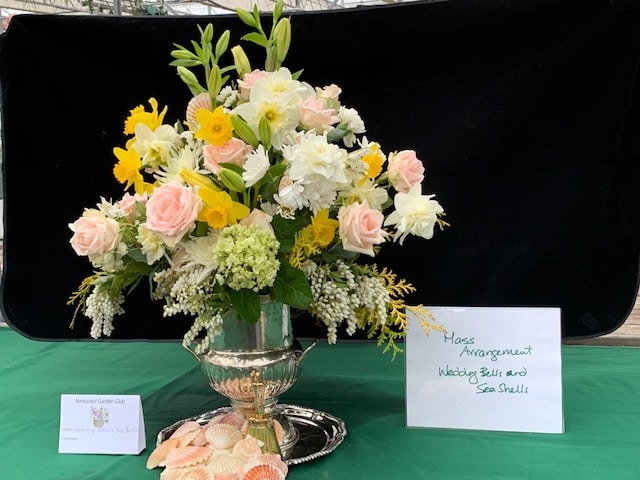
How long will my arrangement last: If you are careful to take the time to go through the steps of conditioning mentioned above your arrangement should last up to 6 days.
Other tips: Arranging flowers should be a joyful fun activity, not one filled with anxiety. Things such a scale (size of flowers); variety of plant material used; texture (differing shapes, sizes differing surfaces – shiny, dull or rough); height in relation to container and other flowers or foliage should be considered when creating an interesting flower arrangement – but not to overwhelm with rules. If it looks right – it is right. So, love it and enjoy!!!!
“Flowers always make people better, happier, and more helpful; they are sunshine, food, and medicine for the soul.” Luther Burbank




